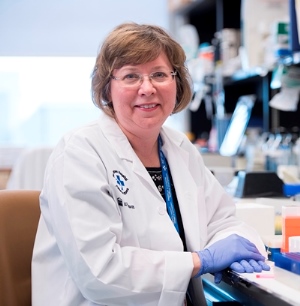 “The ovary is in constant damage-control mode, so its repair mechanism may be quite different from what we find in other tissues,” said Dr. Barbara Vanderhyden. “Understanding this is important for understanding conditions like ovarian cancer and infertility.” Approximately every 28 days, hundreds of cells die and disintegrate on the ovary’s surface as an egg breaks through and begins its journey. Ovaries have become masters at repairing this damage, but exactly how they do this remains a mystery.
“The ovary is in constant damage-control mode, so its repair mechanism may be quite different from what we find in other tissues,” said Dr. Barbara Vanderhyden. “Understanding this is important for understanding conditions like ovarian cancer and infertility.” Approximately every 28 days, hundreds of cells die and disintegrate on the ovary’s surface as an egg breaks through and begins its journey. Ovaries have become masters at repairing this damage, but exactly how they do this remains a mystery.
In the most in-depth study of its kind, researchers from The Ottawa Hospital and uOttawa sought to identify the stem cells that are responsible for this repair and map their molecular pathways. But what they found wasn’t so simple: they discovered that there are many different starting points and pathways that can create stem-like cells on the surface of the ovary. This is in stark contrast to the distinct development and repair pathways in other tissues.
“The ovary is in constant damage-control mode, so its repair mechanism may be quite different from what we find in other tissues,” said Dr. Barbara Vanderhyden, senior scientist at The Ottawa Hospital, professor at the University of Ottawa and Corinne Boyer Chair in Ovarian Cancer Research. “Understanding this is important for understanding conditions like ovarian cancer and infertility.”
See Communications Biology for details.
Authors: Carter LE*, Cook DP*, McCloskey CW, Grondin MA, Landry DA, Dang T, Collins O, Gamwell LF, Dempster HA, Vanderhyden BC. *Contributed equally.
Core Resources: StemCore
Funding: Canadian Institutes of Health Research, Natural Sciences and Engineering Research Council of Canada, Ontario Ministry of Colleges and Universities. All research at The Ottawa Hospital is also enabled by The Ottawa Hospital Foundation.
The Ottawa Hospital is a leading academic health, research and learning hospital proudly affiliated with the University of Ottawa.
Media Contact
Jenn Ganton
613-614-5253
jganton@ohri.ca
